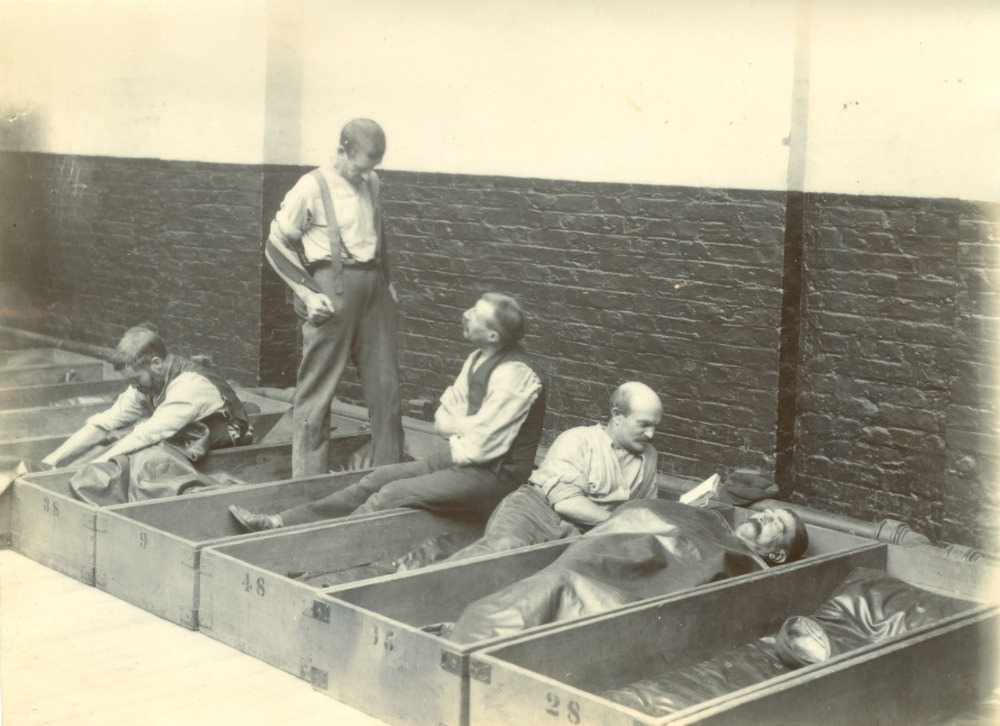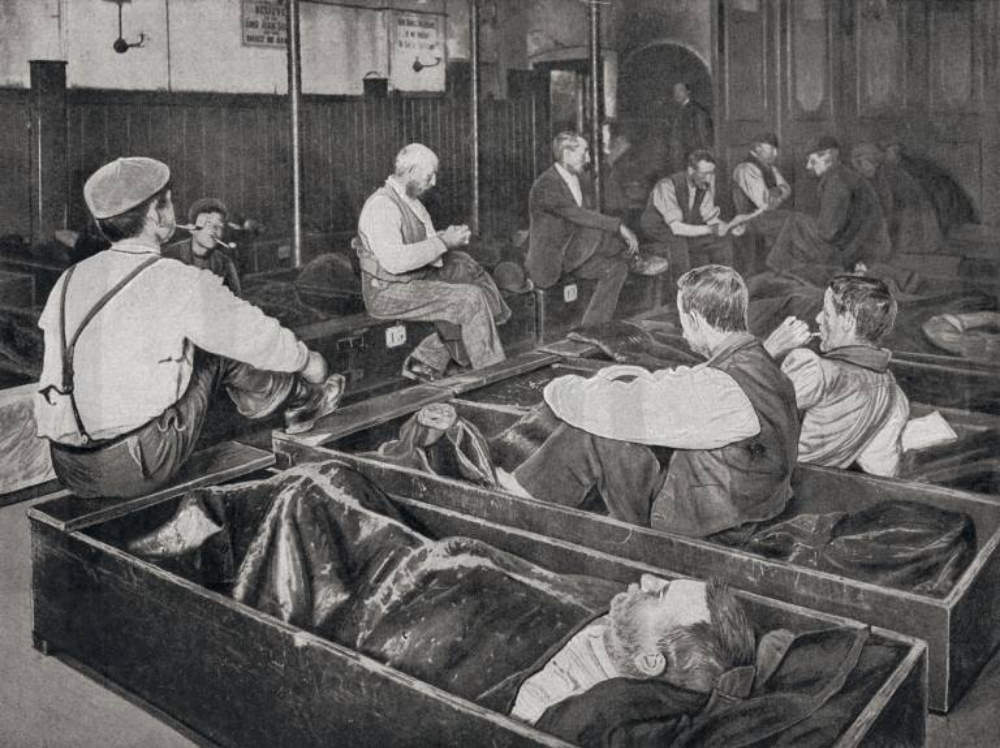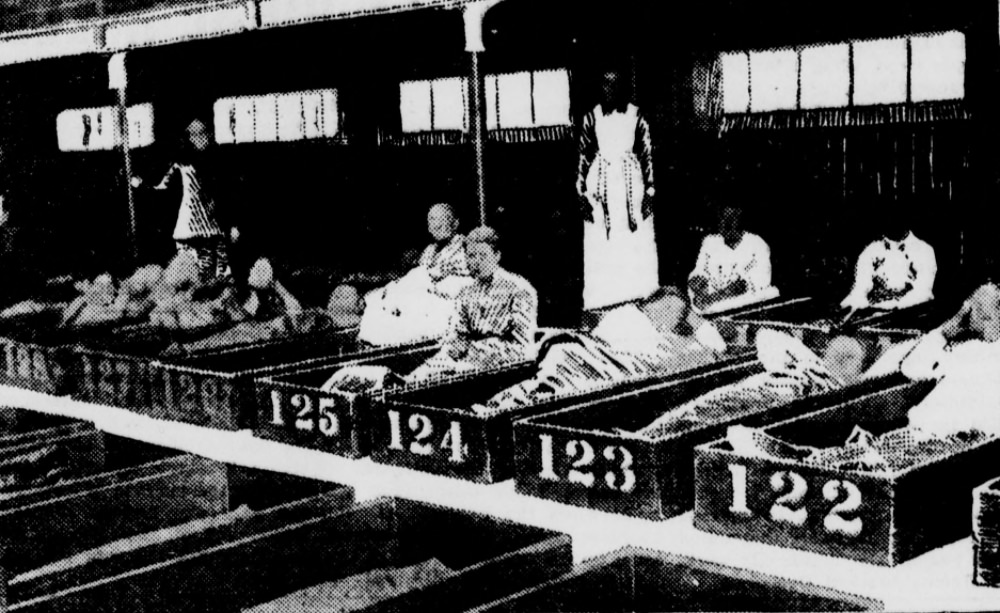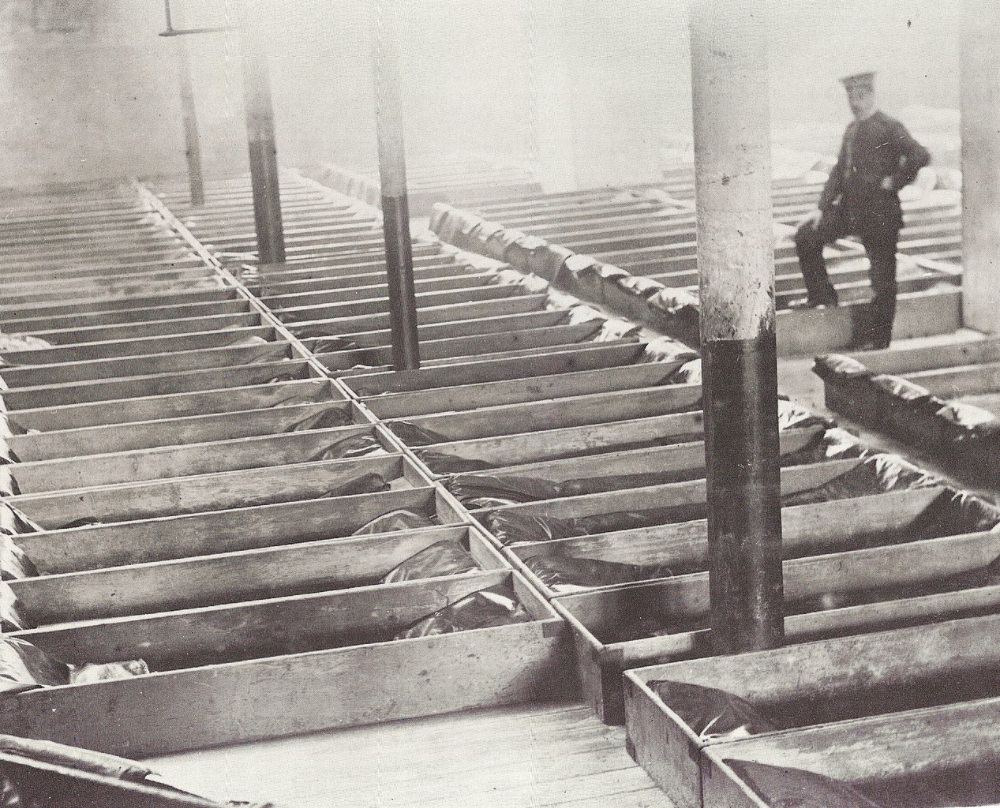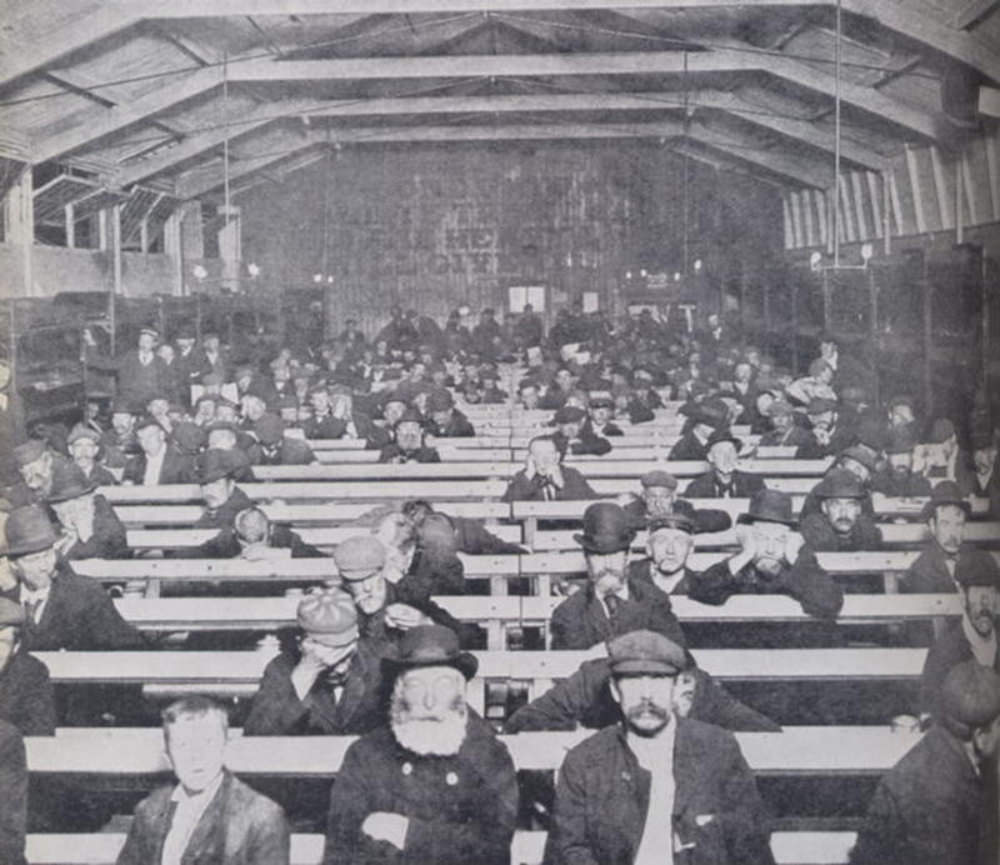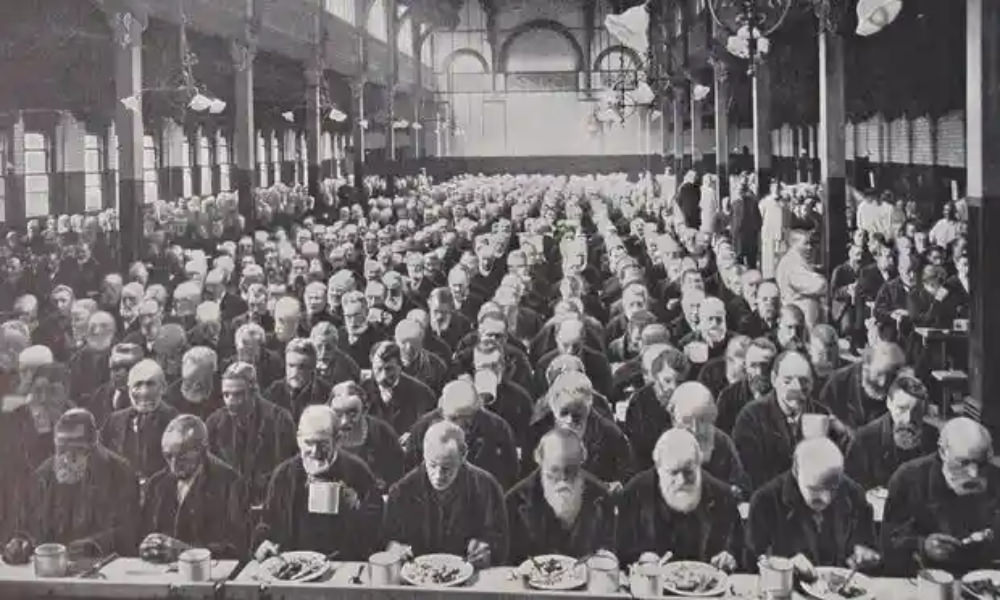A four-penny coffin was one of the first homeless shelters established in the heart of London. It was operated by the Salvation Army in the late 19th and early 20th centuries to offer comfort and aid to its needy clients.
A penny sit-up shelter, where a homeless person could get food and shelter for a penny, was operated by the Salvation Army in the area. A customer allowed to sit on a bench all night but was not allowed to sleep. As an additional option, the “two-penny hangover” was offered. It was similar to the penny sit-up except that there was a rope in front of the bench, and the client was permitted only to lie down flat on his back and sleep. For four pennies, a client could stay at a coffin house. He was provided with shelter and food, as well as the chance to lie down flat on his back and sleep in a coffin-shaped wooden box. A tarp was provided for covering. It was the cheapest homeless shelter in London at that time. Coffin houses were famous because they were an affordable and mid-range solution for homeless clients looking for relief from the cold.
In terms of modern standards, this shelter is inadequate. However, it was viewed as an inexpensive and compassionate solution to London’s rising homelessness. It was also thought to have the benefit of drawing many new Christians to Christianity.


